Unveiling the Versatility of Sheds: Beyond Mere Storage Solutions
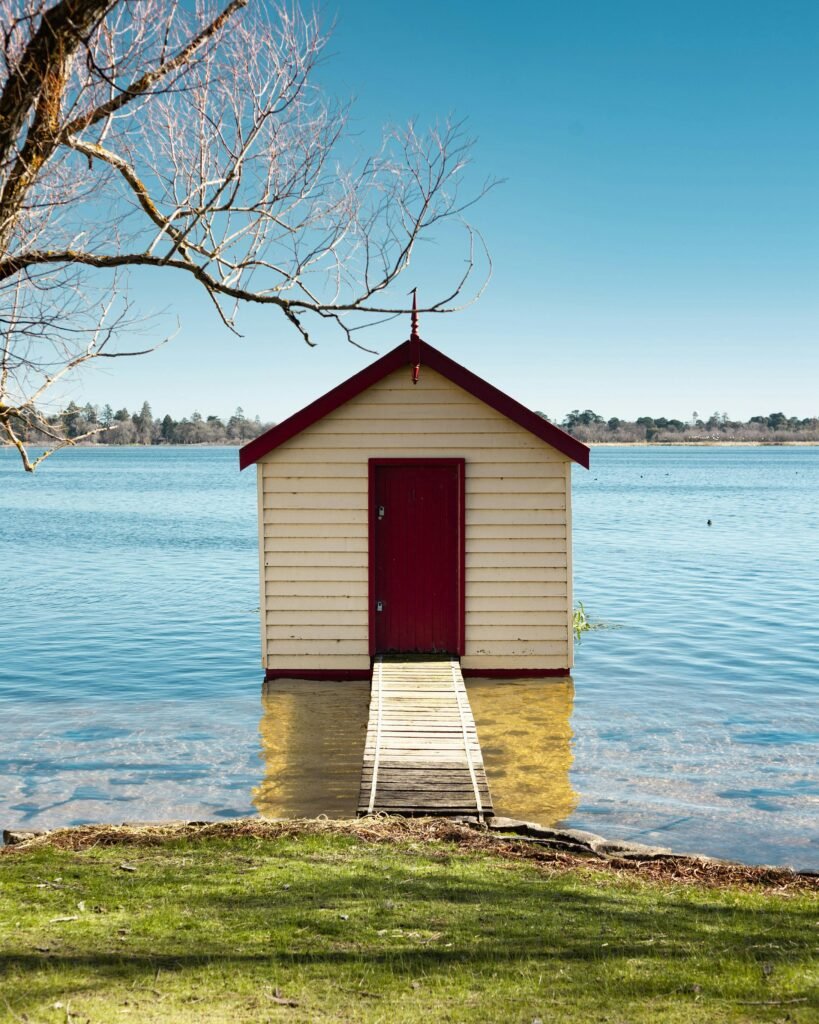
Introduction
In outdoor structures, sheds have long been synonymous with storage solutions. Yet, beneath their humble façade lies a world of untapped potential. Beyond merely housing garden tools and seasonal equipment, sheds possess a versatility that often goes unnoticed. This comprehensive exploration delves into the myriad of innovative and unexpected uses for sheds, transforming them from mundane storage units into dynamic spaces that enrich our lives in countless ways.
Artisan Workshops: Fostering Creativity and Craftsmanship
Sheds serve as ideal sanctuaries for artisans and craftsmen seeking a dedicated space to pursue their creative endeavors. These workshops have sturdy workbenches, various tools ranging from chisels to power saws, and ample storage for materials and unfinished projects. Whether woodworking, metalworking, pottery, or any other craft, sheds provide the perfect environment for artisans to hone their skills and bring their artistic visions to life. With the freedom to customize the space according to their specific requirements, artisans can unleash their creativity without constraints, creating intricate wood carvings, sculptural masterpieces, or functional pottery pieces within the walls of their workshop retreats.
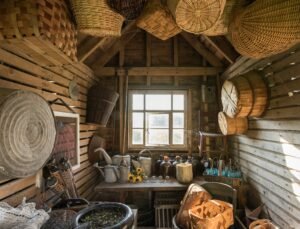
Relaxation Retreats: Creating Tranquil Oases in Nature
Transforming sheds into peaceful retreats offers individuals a tranquil sanctuary to escape from the busy pace of their daily lives.
These cozy havens can be repurposed as meditation rooms, reading nooks, or yoga studios, providing a sanctuary for relaxation and introspection. Adorned with comfortable seating, soft lighting, and nature-inspired decor, sheds offer a tranquil environment where one can unwind, recharge, and reconnect with oneself amidst the beauty of the outdoors. Large windows or skylights invite natural light to flood the space, creating a soothing ambiance that promotes calmness and serenity. Whether practicing mindfulness meditation, delving into a captivating book, or engaging in rejuvenating yoga poses, sheds provide a private retreat where individuals can nurture their mental and emotional well-being away from the outside world's distractions.
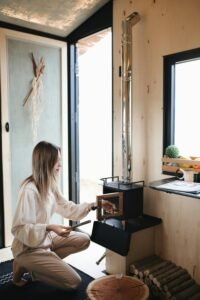
Home Offices: Embracing Remote Work and Entrepreneurship
Sheds have emerged as popular home office solutions in an era of remote work and digital entrepreneurship. These versatile structures provide individuals with a dedicated workspace that fosters productivity, creativity, and focus. Equipped with the necessary amenities such as electricity, Wi-Fi, and ergonomic furnishings, sheds offer a conducive environment for professionals to pursue their careers from the comfort of their backyard. Exhibitions enable people to create a professional environment suited to their unique requirements and desires, whether for freelancing, establishing a consulting firm, or nurturing a startup. Customizable layouts, ample storage solutions, and soundproofing options ensure that each home office shed is designed to enhance productivity and support the success of its occupant's endeavors.
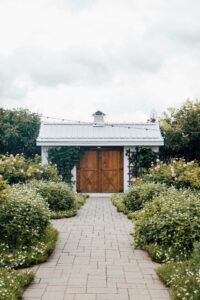
Gardening Havens: Cultivating Green Spaces and Botanical Beauty
For gardening enthusiasts, sheds offer an invaluable space for nurturing plants, organizing tools, and storing supplies. Beyond serving as mere storage units, sheds can be transformed into potting sheds, greenhouse extensions, or garden workshops that facilitate a wide range of horticultural activities. These functional spaces have potting benches, shelving systems, and climate control options. They allow individuals to indulge their passion for gardening year-round and cultivate vibrant green spaces teeming with life. Whether propagating seedlings, transplanting flowers, or harvesting fresh produce, sheds provide gardeners with a dedicated sanctuary to immerse themselves in the joys of cultivating botanical beauty while connecting with the natural world steps away from their own homes.
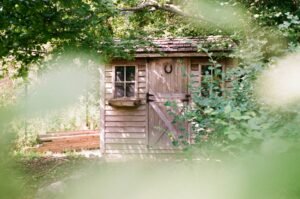
Creative Studios: Inspiring Innovation and Expression
Sheds provide an ideal setting for creatives, offering a blank canvas for artistic expression and innovation. Whether writers seeking solitude, musicians rehearsing melodies, photographers capturing moments, or designers sketching concepts, these versatile structures cater to diverse creative endeavors. Customizable layouts, soundproofing materials, and ample natural light sources enable individuals to tailor their shed studios to suit their artistic needs and preferences. From writing retreats adorned with inspirational quotes to music studios equipped with state-of-the-art recording equipment, sheds serve as incubators for creativity and innovation, fostering an environment where ideas can flourish, and artistic visions can come to fruition.
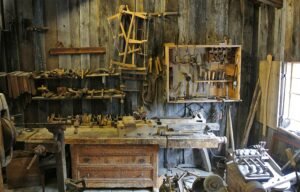
Popular Shed Designs
Popular shed designs encompass a variety of styles, each tailored to meet different aesthetic preferences, functional requirements, and space constraints. Here are some of the most popular shed designs:
- Traditional Gable Roof Shed:
- This traditional style incorporates a triangular roof with two inclined sides converging at a central
- It provides plenty of overhead space and room for storage, perfect for keeping gardening tools, gear, and outdoor equipment organized.
- The gable roof shed's symmetrical shape and timeless appeal complement various architectural styles.
- Barn-Style Shed:
- Inspired by traditional barns, this design features a gambrel roof with two slopes on each side, offering increased storage space in the loft area.
- Barn-style sheds often have double doors for easy access and a rustic charm that adds character to any backyard.
- They are versatile structures that can be used for storage, as workshops, or even as small animal shelters.
- Lean-To Shed:
- Lean-to sheds are characterized by a single sloping roof that leans against an existing structure, such as a house, garage, or fence.
- They are space-efficient solutions for narrow or limited backyard spaces and can be used for storing garden tools, firewood, or bicycles.
- Lean-to sheds are versatile and can be customized in size and design to suit specific needs and space requirements.
- Modern Shed:
- Modern shed designs feature clean lines, minimalist aesthetics, and contemporary materials like metal, glass, and composite siding.
- These sheds often prioritize functionality and style, serving as outdoor offices, art studios, or meditation retreats.
- Modern shed designs embrace simplicity and versatility, offering a sleek and sophisticated addition to any backyard landscape.
- Cottage or Potting Shed:
- Cottage-style sheds evoke the charm of quaint country cottages with their decorative trim, windows, and flower boxes.
- These sheds are often used as gardening sheds, potting sheds, or outdoor retreats where homeowners can enjoy gardening activities or relaxation.
- Cottage sheds typically feature a pitched roof, decorative details, and a cozy interior that reflects a cottage-like ambiance.
- Custom-designed Shed:
- For homeowners seeking a unique and personalized shed design, custom-built sheds offer endless possibilities.
- Custom sheds can be tailored to meet specific size requirements, architectural styles, and functional needs.
- Whether incorporating special features like skylights, built-in shelving, or custom windows, custom-designed sheds allow homeowners to create a one-of-a-kind outdoor space that reflects their tastes and preferences.
These popular shed designs cater to various preferences and purposes, providing homeowners with functional and stylish outdoor storage solutions, workspaces, or retreats tailored to their lifestyles and needs.
Materials for the Shed
Selecting suitable materials for a shed depends on various factors such as budget, climate, aesthetics, and intended use. Here are some commonly used materials for sheds designed for home offices, artisan workshops, gardening havens, and other purposes:
- Wood:
-
- Wood is frequently selected for building sheds because of its inherent attractiveness, adaptability, and the ease
- with which it can be tailored to specific needs. Cedar, redwood, and pressure-treated pine are famous for their robustness and ability to withstand decay and insect damage.
- Wooden sheds offer excellent insulation properties, making them suitable for year-round use as home offices, workshops, or cozy retreats.
- These wooden structures offer versatility in terms of aesthetics, as they can be adorned with paint, stain, or left untreated to harmonize with the environment and architectural design.
- Metal:
- Metal sheds are known for their durability, low maintenance requirements, and resistance to pests, rot, and fire.
- Metal sheds often utilize galvanized steel and aluminum as popular materials for their durability and robustness, ensuring lasting structural integrity.
- Metal sheds are ideal for storage, home workshops, or utility buildings for housing gardening equipment and tools.
- They are available in various colors and finishes to match the home's exterior or blend seamlessly into the landscape.
- Vinyl:
- Vinyl sheds are prized for their durability, weather resistance, and low maintenance requirements.
- Made from PVC (polyvinyl chloride) or vinyl-coated steel, these sheds are impervious to rot, rust, and pests, making them ideal for humid or wet climates.
- Vinyl sheds come in various styles and colors, with options that imitate wood and metal, providing flexibility and visual attractiveness.
- They are suitable for storage, gardening, or as home offices, providing a clean and durable solution for outdoor storage needs.
- Composite:
- Composite sheds combine wood fibers and recycled plastics to create a durable, eco-friendly building material.
- These sheds offer wood's natural look and texture with the added benefits of moisture resistance, insect resistance, and low maintenance.
- Composite sheds come in various designs and colors, giving homeowners the flexibility to achieve their preferred look while benefiting from composite materials
- ' strength and lasting quality. They are suitable for multiple uses, including storage, workshops, gardening, and home offices, providing a versatile and sustainable outdoor storage solution.
- Prefabricated Kits:
- Prefabricated shed kits are available in various materials, including wood, metal, vinyl, and composite.
- These kits include components already cut and drilled, simplifying the assembly process for individuals with essential tools and do-it-yourself abilities.
- Prefabricated shed kits provide homeowners with a convenient, cost-effective, and customizable solution. They allow individuals to select the material, size, and design that aligns perfectly with their requirements and tastes.
- They are suitable for various purposes, including storage, workshops, gardening, and home offices, providing a cost-effective and efficient solution for outdoor storage and workspace needs.
When choosing materials for a shed designed for a home office, artisan workshops, gardening sanctuaries, or any other use, it's crucial to consider aspects like longevity, insulation, upkeep needs, and visual attractiveness. By choosing suitable materials, homeowners can create a functional, comfortable, and stylish outdoor space that enhances their lifestyle and meets their needs and preferences.
Material Costs:
| Material | Average Cost (per square foot) | Characteristics |
| Wood (Treated Pine) | $10 - $20 | Natural appearance, versatile, requires maintenance (staining, painting) |
| Cedar or Redwood | $15 - $30 | Naturally resistant to decay and insects, premium appearance, higher Cost |
| Metal (Galvanized Steel) | $8 - $15 | Sturdy, easy to care for, resilient against decay and pests, prone to rust if not adequately coated. |
| Vinyl | $10 - $20 | Weather-resistant, low maintenance, does not require painting or sealing, limited color options |
| Composite (Wood-Plastic) | $15 - $25 | Sturdy, not prone to decay or insect damage, requires minimal upkeep, environmentally sustainable, and comes with a higher price tag. |
| Prefabricated Kit (various materials) | $10 - $30 | Cost varies depending on material type, size, and design and may include all necessary components for assembly. |
These figures are approximate, and actual expenses might differ depending on the quality of materials, variations in regional pricing, and the rates offered by suppliers. Additionally, labor costs for construction and additional expenses for insulation, roofing, doors, windows, and other accessories should also be considered when budgeting for a shed project. Obtaining quotes from multiple suppliers and contractors is advisable to get a more accurate estimate tailored to your specific needs and location.
Average Lifespans of a Shed
The average lifespan of a shed can vary significantly depending on several factors, including the materials used in its construction, the quality of craftsmanship, the climate and environmental conditions where it's located, and the level of maintenance it receives. Here's a general overview of the lifespan of sheds made from everyday materials:
- Wood Sheds:
- With appropriate upkeep and care, like consistent staining or painting to safeguard against moisture and decay, wooden sheds can endure for 10 to 30 years or even longer.
- Hardwood varieties like cedar and redwood tend to have longer lifespans due to their natural resistance to decay and insects.
- Metal Sheds:
- Metal storage structures, especially those crafted from galvanized steel or aluminum, exhibit robustness and resilience against rust, decay, and infestations from pests.
- With minimal maintenance, such as occasional cleaning and repainting to prevent corrosion, metal sheds can last 20 years or more.
- Vinyl Sheds:
- Vinyl sheds are known for their durability, weather resistance, and low maintenance requirements.
- With proper care, including regular cleaning to remove dirt and debris, vinyl sheds can last 20 years or more.
- Composite Sheds:
- Composite sheds made from wood fibers and recycled plastics offer durability and resistance to moisture, rot, and insects.
- With minimal maintenance, such as occasional cleaning and sealing to protect against moisture, composite sheds can last 20 years or more.
- Prefabricated Shed Kits:
- The lifespan of prefabricated shed kits can vary depending on the materials used and the quality of construction.
- High-quality prefabricated shed kits made from durable materials like wood, metal, vinyl, or composite can last 10 to 20 years or more with proper maintenance.
It's important to note that these are average lifespans, and individual shed lifespans may vary based on specific factors such as exposure to harsh weather conditions, the frequency of use, and the level of maintenance performed. Regular inspection, maintenance, and timely repairs can extend the lifespan of a shed and ensure that it continues to provide reliable storage or workspace for many years to come.
Key Takeaways
Here are the key takeaways regarding the lifespan of sheds:
- Lifespan Variation: The durability of a shed can differ significantly based on elements like the materials used, the quality of construction, the local climate, and how well it's maintained over time.
- Material Considerations: Different shed materials offer varying levels of durability and resistance to environmental factors. Wood, metal, vinyl, composite, and prefabricated kits each have their average lifespan.
- Maintenance Impact: Routine upkeep, such as regular cleaning, painting, sealing, and necessary repairs, can significantly prolong the lifespan of a shed, regardless of the material it's made from.
- Proper Care Matters: Proper care and attention to environmental factors can help preserve a shed's structural integrity and functionality over time.
- Individual Factors: Individual circumstances, such as exposure to harsh weather conditions, frequency of use, and level of maintenance, can influence the lifespan of a shed.
- Longevity Expectations: While particular sheds can endure for a decade to three decades or even longer given adequate maintenance, others might necessitate earlier replacement or substantial repairs due to neglect or environmental wear and tear.
FAQS
Here are some frequently asked questions (FAQs) about sheds and their answers:
- How long does it take to build a shed?
-
- The duration required to construct a shed varies depending on factors such as its dimensions, the intricacy of its design, the materials selected, and the builder's expertise. Small prefabricated sheds can be assembled in a day or two, while custom-built sheds may take several days or weeks to complete.
- Do I need a permit to build a shed?
- Permit requirements vary depending on your location, local building codes, and the size and shed you plan to build. In numerous regions, sheds that fall below a certain size threshold, such as 120 square feet, might not necessitate a permit. In contrast, larger sheds or those equipped with plumbing or electrical systems generally require one. It's best to check with your local building department to determine the permit requirements for your specific project.
- What size shed do I need?
-
- The dimensions required for the shed you're looking for rely on what you plan to use it for, the available space, and how much you need to store. Consider the items you plan to store, workspace needs, and future expansion possibilities. Standard shed sizes range from small 6x6-foot garden sheds to more extensive 12x16-foot workshops or storage sheds.
- How do I maintain my shed?
- Consistent upkeep plays a vital role in prolonging the lifespan of your shed. This involves routine chores such as washing the outside to clear away dirt and debris, checking for any indications of wear or decay, applying fresh paint or sealant when necessary to safeguard against moisture and decay, and verifying that doors, windows, and hardware are functioning correctly.
- Can I convert my shed into a living space?
- Converting a shed into a living space, such as a home office, studio, or guest cottage, is possible with careful planning and considering local building codes and regulations. Factors to consider include insulation, ventilation, heating and cooling, electrical wiring, plumbing, and zoning requirements. Speaking with a licensed architect or contractor is crucial to ensure the conversion complies with all applicable regulations and safety requirements.
- What are the best materials for a shed?
- The best materials for a shed depend on factors such as durability, aesthetics, budget, and maintenance preferences. Common shed materials include wood, metal (such as steel or aluminum), vinyl, and composite materials. Each material has advantages and considerations regarding longevity, weather resistance, maintenance requirements, and overall appearance.
These FAQs cover some of the most common questions homeowners may have when considering building, maintaining, or repurposing a shed.
Additional Resources
Here are some additional resources with links and websites where you can find more information about sheds, including building plans, maintenance tips, and regulatory guidelines:
- The Family Handyman:
- Website: www.familyhandyman.com
- This website offers many DIY shed building plans, step-by-step instructions, and shed maintenance and repair tips.
- The Home Depot:
- Website: www.homedepot.com
- Home Depot provides resources for shed construction materials, tools, and kits, as well as helpful guides and videos on shed building and maintenance.
- Better Homes & Gardens:
- Website: www.bhg.com
- Better Homes & Gardens offers shed design inspiration, project ideas, and practical advice for building and organizing sheds.
- This Old House:
- Website: www.thisoldhouse.com
- This Old House features articles, videos, shed construction, renovation, maintenance guides, and expert advice from professionals.
- National Association of Home Builders (NAHB):
- Website: www.nahb.org
- NAHB provides resources for understanding building codes, permits, and regulations related to shed construction and information on finding qualified contractors and builders.
- DIY Network:
- Website: www.diynetwork.com
- DIY Network offers shed building plans, project ideas, instructional videos, and tips for landscaping around sheds and creating outdoor living spaces.
- Bob Vila:
- Website: www.bobvila.com
- Bob Vila provides expert advice, DIY project guides, and product recommendations for shed construction, maintenance, and renovation.
- American Society of Landscape Architects (ASLA):
- Website: www.asla.org
- ASLA offers resources for landscaping around sheds, including tips for site planning, plant selection, and outdoor design principles.
These references offer valuable advice and knowledge for individuals looking to construct, keep up, or adapt a shed for different uses. Whether you're a beginner DIY enthusiast or an experienced homeowner, you'll find helpful information to support your shed project.
Conclusion
In conclusion, sheds offer homeowners a versatile solution for storage, workspace, and relaxation needs in their outdoor spaces.
A diverse range of materials are available for sheds, such as wood, metal, vinyl, composite, and prefabricated kits. People can choose the material that fits their budget, style preferences, and practical needs.
Wooden sheds provide a rustic aesthetic and can be tailored to blend with the surroundings, whereas metal sheds are prized for their toughness and low maintenance requirements. Vinyl sheds are weather-resistant and require minimal upkeep, while composite sheds offer eco-friendly options with enhanced durability. Prefabricated shed kits offer convenience and ease of assembly, catering to DIY enthusiasts and those looking for cost-effective solutions.
Irrespective of the material selected, effective planning, building, and upkeep are crucial for ensuring that a shed remains durable and functional over time. From obtaining necessary permits and adhering to building codes to regular cleaning, painting, and repairs, homeowners can take proactive steps to preserve their shed's structural integrity and aesthetic appeal over time. By investing in a well-designed and well-maintained shed, individuals can enhance their outdoor living experience, organize their belongings, pursue hobbies and crafts, and create a tranquil retreat in their backyard. Whether used as a home office, artisan workshop, gardening haven, or relaxation retreat, a shed represents a valuable addition to any property, offering endless possibilities for enjoyment and utility every season.
- Crafting Affordable Dream Sheds: Cost-Effective Solutions for You
- Affordable Outdoor Storage: Budget-Friendly Shed Alternatives
- Dont Break the Bank: Top Picks for Cheap Shed Options
- Crafting Cost-Effective Solutions: Affordable Shed Construction Explained
- Empowering Your Space: Tips for Managing Shed Construction Budget
- Unveiling Shed Building Cost Estimator: Your Budgets Best Friend
- Revamp Your Shed: Creative Shed Base Ideas for Your Outdoor Oasis
- Elevate Your Shed Game: Unveiling the Magic of Concrete Foundations
- Budget-Friendly Solutions: Exploring Prefab Shed Prices
- Step-by-Step Gravel Shed Foundation Building Made Easy

Leave a Reply
You must be logged in to post a comment.